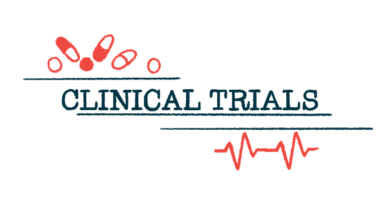Dosing complete in Phase 2b trial of AHB-137 for hepatitis B
AusperBio: Findings from the study indicate early signs of efficacy

A Phase 2b clinical trial testing AusperBio’s investigational therapy AHB-137 in people with chronic hepatitis B has completed dosing and is now unblinded, meaning the researchers know which patients were in which treatment groups.
Clinical trials are often blinded while dosing is ongoing so that no one involved will be biased by knowing who got the investigational treatment and who didn’t. After that, the studies are unblinded, so data can be analyzed and interpreted.
While AusperBio didn’t share any data from the China-based Phase 2b trial (NCT06550128), the company said the interim findings have been encouraging.
“We are highly encouraged by the efficacy data observed in the Phase [2]b study thus far,” Guofeng Cheng, PhD, co-founder and CEO of AusperBio, said in a company press release. “As importantly, AHB-137 has continued to be well tolerated in patients.”
The announcement comes a few months after AusperBio presented positive interim data from the Phase 2a portion of an ongoing Phase 1/2a trial (NCT06115993) that showed AHB-137 was well tolerated and associated with early signs of efficacy.
“The Phase IIb interim data strengthens the exciting Phase IIa data,” said Chris Yang, PhD, co-founder and chief scientific officer of AusperBio, “We are working towards submitting the interim data to an international conference shortly.”
Hepatitis B is a form of hepatitis, or liver inflammation, caused by an infection of the hepatitis B virus (HBV). These infections sometimes clear up on their own without causing major health issues, but other people will have chronic infections that can result in serious liver damage over time.
Treating chronic hepatitis B usually involves interferons, which aim to boost the immune system’s ability to fight the virus, or antiviral therapies that interfere with HBV’s ability to replicate. Antivirals are usually taken for life to keep the virus under control.
What is AHB-137?
AHB-137 is an antisense oligonucleotide (ASO), a class of therapies made of small strands of genetic material designed to bind to specific messenger RNA (mRNA) — an intermediate molecule derived from DNA that guides protein production — and promote their breakdown. This should stop the production of viral proteins needed for the virus to replicate and infect cells.
AHB-137 was developed with the company’s proprietary Med-Oligo ASO platform and contains chemical modifications to make it more potent and safer than other ASOs, according to AusperBio. The company believes AHB-137 could lead to a functional cure for chronic hepatitis B, where the virus is no longer actively replicating and treatment can be stopped.
The therapy received breakthrough therapy status for chronic hepatitis B in China, which is intended to help speed its clinical development.
Interim results of Phase 1/2a study
The Phase 2a portion of the Phase 1/2a trial, conducted in China, recruited adults, age 18-65, with chronic hepatitis B infection who tested negative for HBeAg, an HBV protein that indicates the virus is actively replicating in the body. All the participants were also on stable antiviral treatment.
They are receiving once weekly injections under the skin of AHB-137 at either 300 mg (32 people) or 225 mg (23 people) for 24 weeks after two loading doses on days 4 and 11.
After completing six months of treatment, the patients will receive only their usual antivirals without AHB-137 for six months, and then no treatment for another six months.
The main goal is to evaluate the proportion of patients who have HBV DNA below the limit of quantification and undetectable HBsAg — a protein critical for HBV’s ability to infect cells — in their blood after 24 weeks.
According to an abstract accepted for presentation at a conference in November, interim 12-week results showed HBsAg levels were rapidly reduced upon starting AHB-137. The protein was undetectable for 62% of patients given the 300 mg dose and 43% of those on the 275 mg dose.
Among those who achieved undetectable HBsAg, 47% developed antibodies against the protein. Called seroconversion, developing the antibodies indicates the immune system has successfully established the ability to control HBV in the long term.
AHB-137 was well tolerated, with no serious adverse events. The most common treatment-related side effects were injection site reactions, fever, and lab abnormalities.
The ongoing Phase 2b trial, also being conducted in China, enrolled 64 adults with chronic hepatitis B on stable antiviral treatment. Half received AHB-137 for 24 weeks and the other half received a placebo for eight weeks before switching to AHB-137 for the remaining 16 weeks.
Its main goal is the same as in the Phase 2a study. The participants will be followed for up to a little over a year to assess the therapy’s safety and efficacy.
“The rapid progress in AHB-137’s clinical development is a testament to AusperBio’s capability and commitment to addressing the urgent unmet need of a CHB functional cure,” Cheng said.







